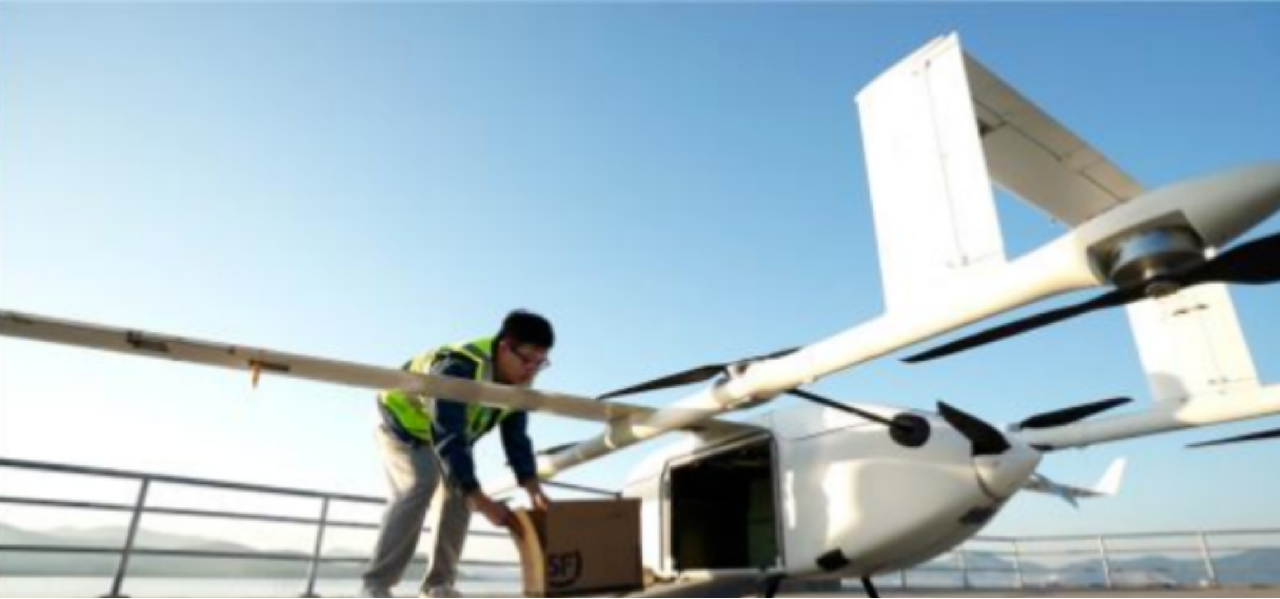Driven by the wave of scientific and technological innovation, low-altitude economy is penetrating into various industries in its unique form, including the Marine economy that has flourished for nearly 20 years. In 2003, China issued the first Marine economic development plan and proposed the strategic goal of building a maritime power. Although China has entered the youthful stage of development today, it still faces many challenges and problems in the efficient development of Marine resources, real-time monitoring of the Marine environment, maritime emergency rescue, distribution of island materials, and maritime security and sovereignty. The rise of low-altitude economy has brought new opportunities and paths for Marine economy to solve challenges and innovate development.01
- The emerging and important trend of "low altitude + ocean"
"Low-altitude economy + Marine economy" is not only the inevitable result of technological progress, but also a strategic choice to cope with global challenges and seize development opportunities. The technological achievements and business models of low-altitude economy not only broaden the industrial chain of the Marine economy, but also improve the scientific and technological content and competitiveness of the Marine economy, and promote the integration of the two major economic forms, which is reflected in the following aspects:

First, maritime search and rescue operations
Low-altitude aircraft, including helicopters and unmanned aerial vehicles, can quickly respond to remote waters or emergency situations to perform search and rescue personnel, medical evacuation and immediate delivery of critical supplies, significantly improving the timeliness and effectiveness of maritime search and rescue operations.
Second, Marine monitoring and ecological conservation
The use of low-altitude flying platforms such as drones and airships can implement comprehensive monitoring of the Marine environment, including water quality monitoring, pollution source tracking, and Marine biological population census, which helps to identify and respond to environmental challenges in a timely manner and promote the health and stability of Marine ecosystems.
Third, maritime law enforcement and safety management
Low-altitude aircraft play an important role in maritime border patrol, illegal behavior detection (such as smuggling, illegal immigration), rational management of fishery resources, and strengthen the maintenance of maritime order and security.
Fourth, the operation and maintenance of offshore wind energy facilities
In the operation of offshore wind farms, low-altitude aircraft undertake equipment condition monitoring, fault troubleshooting and maintenance tasks, effectively reducing labor costs and operational risks, and improving the overall operation efficiency of wind power facilities.
The fifth is the offshore oil and gas exploitation operation assistance
The low-altitude aircraft serves the routine inspection, material supply, emergency evacuation and other links of offshore oil and gas drilling platforms, which enhances the safety and efficiency of operations.
The sixth is the Marine leisure tourism experience
Through helicopters, hot air balloons, drones and other low-altitude flying vehicles, provide unique Marine sightseeing projects, such as high-altitude overlooking the coastal landscape, island exploration, etc., to enrich the product line and experience level of Marine tourism.
Seventh, Marine scientific exploration and research
Equipped with various sensing instruments and scientific research equipment, low-altitude spacecraft participate in field observation and experimental research in Marine meteorology, Marine physics, Marine geology and other fields, promoting the in-depth development of Marine science and knowledge accumulation.
Eighth, maritime logistics and distribution services
Unmanned aerial vehicles (UAVs) and small cargo aircraft perform the rapid transfer of small, high-priority cargo in the maritime environment, especially for replenishment and supply chain optimization in inter-island or remote waters.
Ninth, maritime communication network construction
In sea areas where infrastructure is scarce, low-altitude aircraft can act as mobile communication relay nodes to provide communication coverage under temporary or emergency conditions to ensure the flow of information and communication.
Tenth, Marine disaster prevention and response
Low-altitude aircraft participate in the monitoring, early warning and post-disaster assessment of Marine disasters, such as typhoon track prediction and tsunami warning issuance, and assist in disaster analysis and rescue coordination after disaster events occur, so as to improve the full-cycle capability of disaster management.

02
② Practice case of integrated development of "low altitude + ocean"
- Zhuhai intelligent farming platform
In June 2024, the delivery and commissioning ceremony of "Gesheng 1", the first semi-submersible trussed farming platform of Zhuhai's "Take the sea to start, start and put into production" project, was held in the waters of Araszhou Island, Guishan, Zhuhai. The platform is equipped with a UAV takeoff and landing platform and an intelligent fishery management and control system, which fully uses modern fishery production systems such as clean energy power generation, feed storage, automatic UAV feeding, environmental monitoring, video surveillance, and network communication to achieve intelligent management.
- Zhoushan Drone seafood Flight
In May 2024, between Zhoushan and Shanghai, the world's first 100km 5G-A integrated cross-sea route low-altitude network coverage was realized. China Mobile adopted multiple technical means such as multi-frequency coordination and low-altitude coverage optimization to achieve complete coverage of 5G network in the entire sea area of 300-meter low-altitude network. Based on this, the drone can carry 100 pounds of fresh sea fish with seawater, take off from the huge fishing boat in Zhoushan Sea, go through more than 100 kilometers of logistics routes, 1 hour to Shanghai, 2 hours to the table. In the past, it took three hours to transport by cargo ship.